Understanding the Key Differences Between LTO and LFP Batteries
When comparing battery technologies for modern energy storage systems, LTO and LFP batteries often top the list. These two battery types offer compelling advantages in terms of performance, longevity, and safety. Whether you're involved in renewable energy systems, electric vehicles, or backup power solutions, understanding the subtle and major distinctions between LTO and LFP batteries is critical for making the right choice.
- Introduction to LTO and LFP Batteries
- Chemistry and Composition of LTO and LFP Batteries
- Cycle Life Comparison Between LTO and LFP Batteries
- Charging and Discharging Capabilities of LTO and LFP Batteries
- Energy Density of LTO and LFP Batteries
- Temperature Tolerance and Safety of LTO and LFP Batteries
- Cost Comparison of LTO and LFP Batteries
- Applications of LTO and LFP Batteries
- Environmental Impact of LTO and LFP Batteries
- Advantages and Disadvantages of LTO and LFP Batteries
- Future Trends in LTO and LFP Batteries
- Choosing Between LTO and LFP Batteries
- Final Thoughts on LTO and LFP Batteries
Introduction to LTO and LFP Batteries
Before diving into technical comparisons, it's important to define what LTO and LFP batteries are. Each uses a different material composition, which dramatically influences its characteristics and applications.
What Are LTO Batteries?
LTO stands for Lithium Titanate Oxide. LTO batteries use lithium titanate as the anode material instead of the traditional graphite. This change grants them exceptional advantages, particularly in safety, lifespan, and charging speed.
What Are LFP Batteries?
LFP stands for Lithium Iron Phosphate. This battery chemistry uses iron phosphate as the cathode material, which is known for stability, thermal safety, and affordability. LFP batteries are widely used in electric vehicles, solar energy storage, and consumer electronics.
Chemistry and Composition of LTO and LFP Batteries
Understanding the chemical structures of LTO and LFP batteries sheds light on why they behave differently under various conditions.
LTO Battery Chemistry
Anode Material: Lithium Titanate (Li₄Ti₅O₁₂)
Cathode Material: Commonly lithium manganese oxide or nickel manganese cobalt oxide
Voltage Range: Typically 1.8V to 2.8V
Electrolyte: Standard lithium-ion electrolyte
LTO’s anode allows it to avoid the formation of lithium dendrites, making it one of the safest battery chemistries available.
LFP Battery Chemistry
Anode Material: Graphite
Cathode Material: Lithium Iron Phosphate (LiFePO₄)
Voltage Range: 2.5V to 3.65V
Electrolyte: Standard lithium-ion electrolyte
LFP batteries offer a higher nominal voltage than LTO batteries, which can be advantageous for certain applications requiring energy density.
>>See also Understanding 18650 Batteries in 48V and 52V Configurations
Cycle Life Comparison Between LTO and LFP Batteries
One of the most important factors in battery selection is cycle life, which directly impacts total cost of ownership.
Cycle Life of LTO Batteries
LTO batteries are renowned for their ultra-long cycle life:
Typical Range: 15,000 to 25,000 cycles
Real-World Use: Often lasts over 20 years in moderate applications
This longevity makes LTO batteries ideal for industrial applications and high-use environments.
Cycle Life of LFP Batteries
LFP batteries have a respectable cycle life as well:
Typical Range: 2,000 to 7,000 cycles
Real-World Use: Often lasts 8–12 years with proper management
While not as long-lived as LTO, LFP batteries still offer a solid lifespan, especially when operated within their optimal temperature and charge ranges.
Charging and Discharging Capabilities of LTO and LFP Batteries
Fast charging and consistent power output are crucial, particularly for electric vehicles and backup systems.
Charging Speed
LTO Batteries: Can charge at 10C rates or higher, meaning full charge in under 10 minutes.
LFP Batteries: Generally support 1C to 2C charging rates; full charge in about 1–2 hours.
Discharging Performance
LTO Batteries: Maintain stable voltage throughout discharge, which is ideal for demanding loads.
LFP Batteries: Provide steady discharge but can sag at higher loads compared to LTO.
Energy Density of LTO and LFP Batteries
Energy density affects the size and weight of a battery for a given capacity—critical in mobile and space-constrained applications.
LTO Battery Energy Density
Gravimetric: 50–80 Wh/kg
Volumetric: Lower compared to other chemistries
Due to its lower energy density, LTO is not typically used where space or weight is a major constraint.
LFP Battery Energy Density
Gravimetric: 90–160 Wh/kg
Volumetric: Better than LTO, but less than NMC or NCA chemistries
LFP batteries strike a balance between safety and energy density, making them a popular choice for electric vehicles and home storage.
Temperature Tolerance and Safety of LTO and LFP Batteries
Thermal performance is essential for battery safety and reliability across diverse environments.
LTO Battery Safety and Temperature Range
Operating Range: -40°C to +60°C
Safety: Extremely stable; non-flammable; minimal thermal runaway risk
LTO batteries are among the safest lithium-based chemistries and can be used in extreme cold without preheating.
LFP Battery Safety and Temperature Range
Operating Range: -20°C to +60°C
Safety: Very stable; better than NMC/NCA; minor risk of thermal runaway at high temps
While safe, LFP batteries perform poorly at sub-zero temperatures unless supported by heating elements or insulation.
Cost Comparison of LTO and LFP Batteries
Cost is often the deciding factor in selecting between LTO and LFP batteries.
Cost of LTO Batteries
Cost per kWh: $600–$1,200 (as of recent market data)
Reason: High manufacturing cost due to rare materials and complex processing
Cost of LFP Batteries
Cost per kWh: $100–$300
Reason: Abundant materials, mature manufacturing, and global scale
LFP batteries dominate in applications where affordability and energy density are prioritized.
Applications of LTO and LFP Batteries
Different use cases highlight the advantages and limitations of each battery type.
Where Are LTO Batteries Used?
Electric Buses and Trains
Military and Aerospace
Grid Storage with High Duty Cycles
Cold-Climate Applications
Their rapid charging and robust cycle life are unmatched in high-demand scenarios.
Where Are LFP Batteries Used?
Electric Vehicles (EVs)
Home Solar Storage (e.g., Powerwalls)
Portable Electronics
Recreational Vehicles (RVs)
Their low cost, good energy density, and thermal stability make LFP a general-purpose choice.
Environmental Impact of LTO and LFP Batteries
Sustainability and recyclability are growing concerns in battery selection.
Environmental Impact of LTO
Materials: Uses more rare materials than LFP
Recyclability: High due to robust structure
Footprint: Larger carbon footprint per kWh due to energy-intensive manufacturing
Environmental Impact of LFP
Materials: Made from abundant, non-toxic elements
Recyclability: Good; less complex than LTO
Footprint: Lower emissions during manufacturing
Overall, LFP wins in terms of green profile, though both technologies offer advantages over fossil-fuel systems.
>>See also Complete Guide to Group 42 Batteries Maintenance Free Specs and Uses
Advantages and Disadvantages of LTO and LFP Batteries
Let’s break down the pros and cons side by side for a clearer comparison.
LTO Battery Pros and Cons
Pros:
Ultra-fast charging
Exceptional lifespan
Superior safety
Wide temperature tolerance
Cons:
High cost
Lower energy density
Larger form factor
LFP Battery Pros and Cons
Pros:
Affordable
High thermal stability
Moderate lifespan
Good energy density
Cons:
Slower charging
Performance drop in cold weather
Slightly heavier than NMC batteries
Future Trends in LTO and LFP Batteries
Both battery types are expected to evolve with technological advances and growing demand for safer, longer-lasting batteries.
Innovations in LTO
Research focuses on reducing cost and improving energy density, potentially making LTO more competitive in mainstream markets.
Innovations in LFP
LFP continues to dominate EV and storage sectors due to ongoing cost reductions and improvements in cell design.
Choosing Between LTO and LFP Batteries
Selecting the right battery depends on application priorities.
Choose LTO if: You need fast charging, long life, and extreme reliability.
Choose LFP if: You prioritize cost, reasonable performance, and safety in general-purpose environments.
Making the correct choice between LTO and LFP batteries will ensure long-term value and optimal performance for your system.
Final Thoughts on LTO and LFP Batteries
In conclusion, both LTO and LFP batteries bring unique strengths to the table. LTO is unbeatable in durability and safety, while LFP offers an economical and widely accepted solution for everyday applications. As the energy landscape continues to shift toward renewables and electrification, understanding the nuances of LTO and LFP batteries will help engineers, consumers, and businesses make better, more sustainable energy decisions.

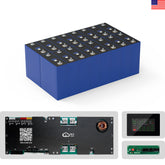

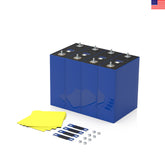

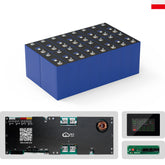

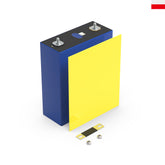

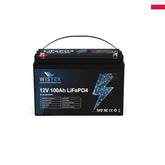
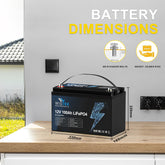
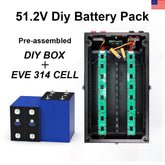

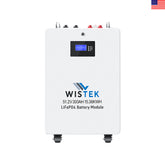
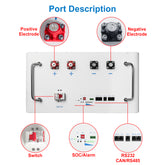
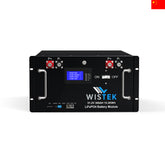
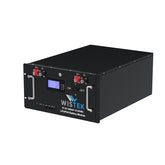


Leave a comment
All blog comments are checked prior to publishing